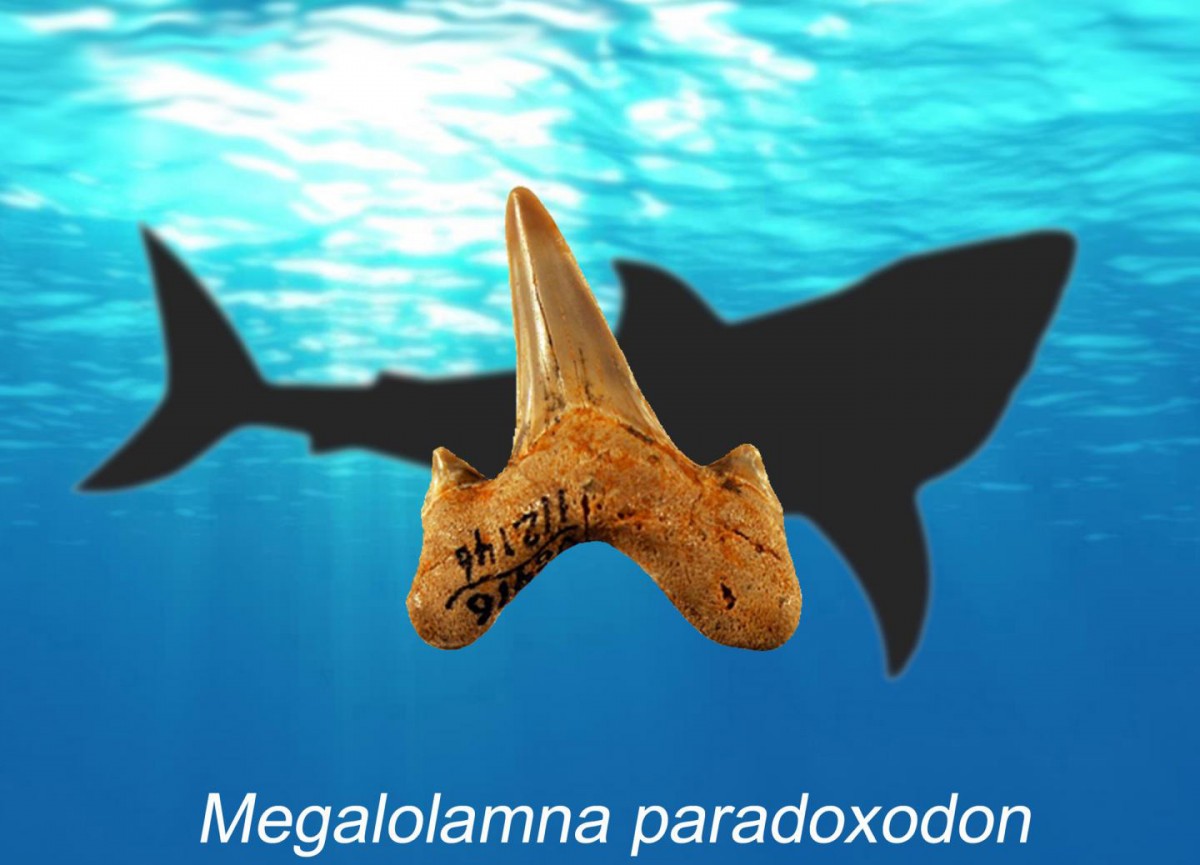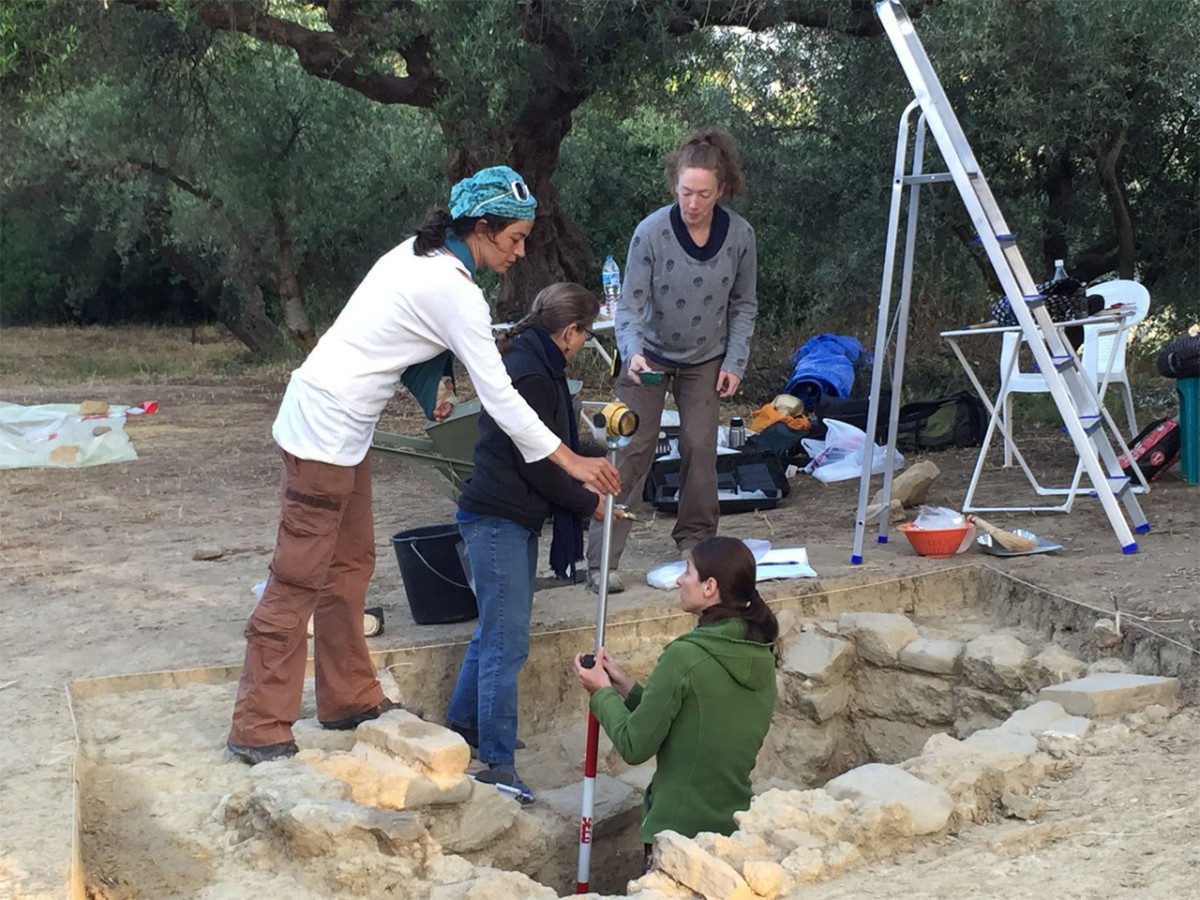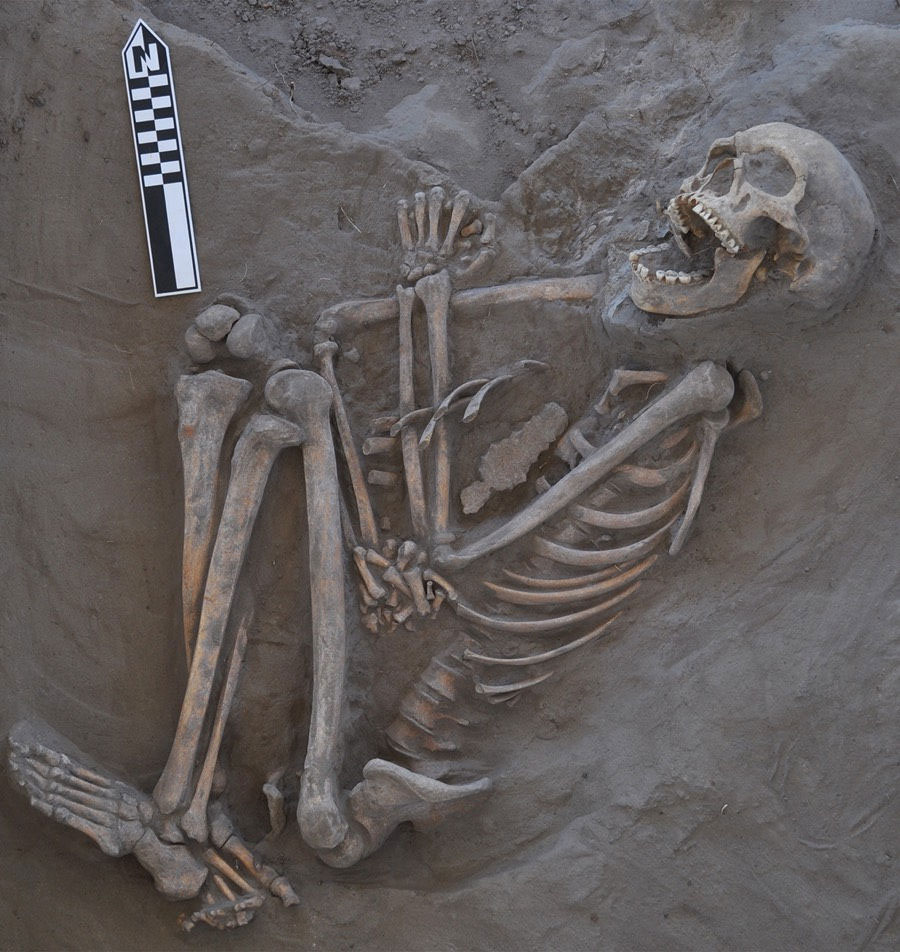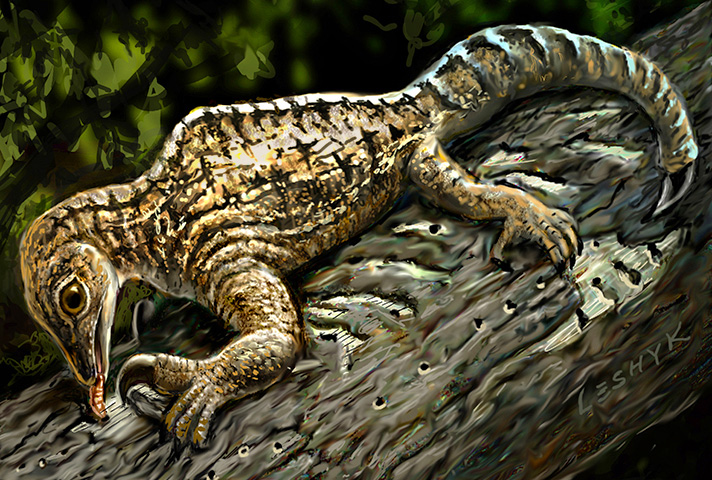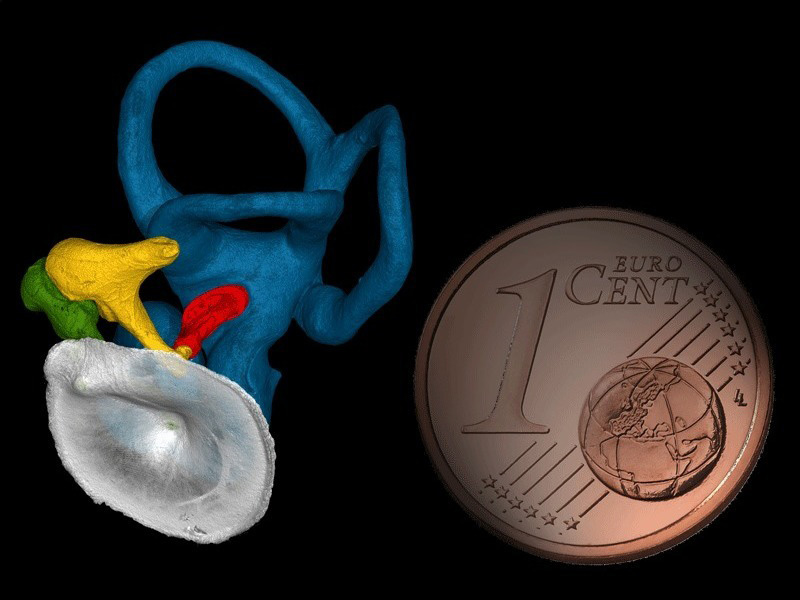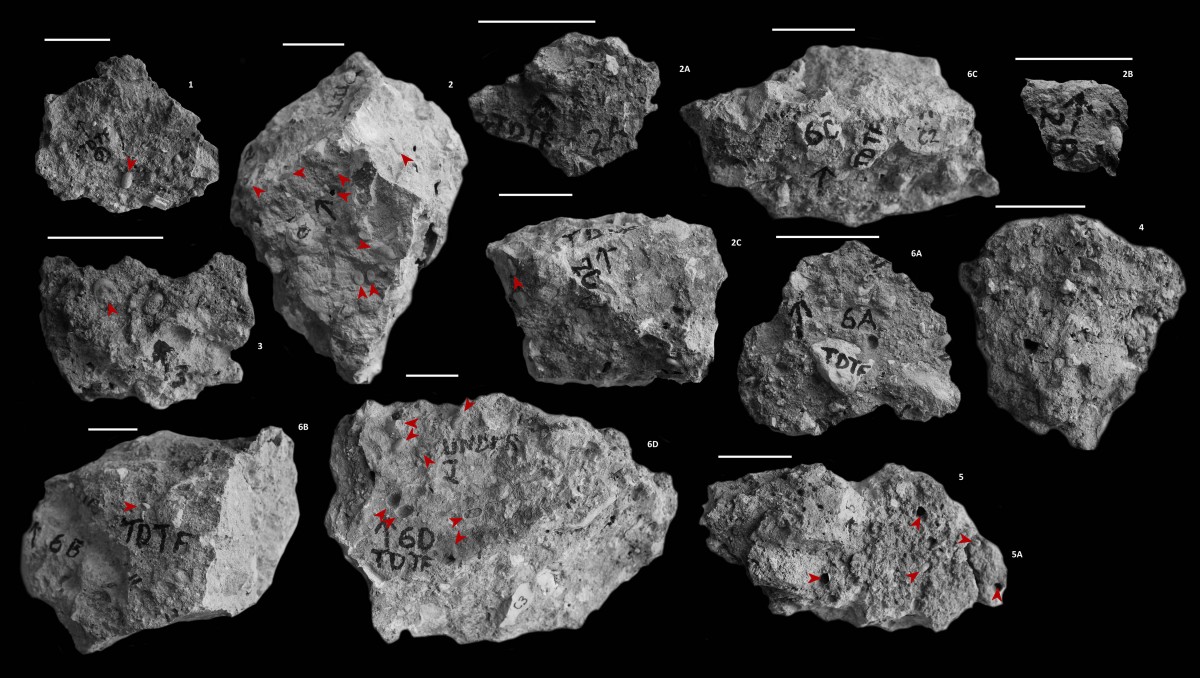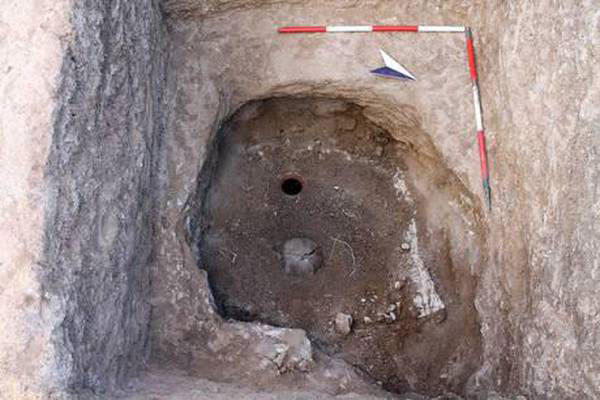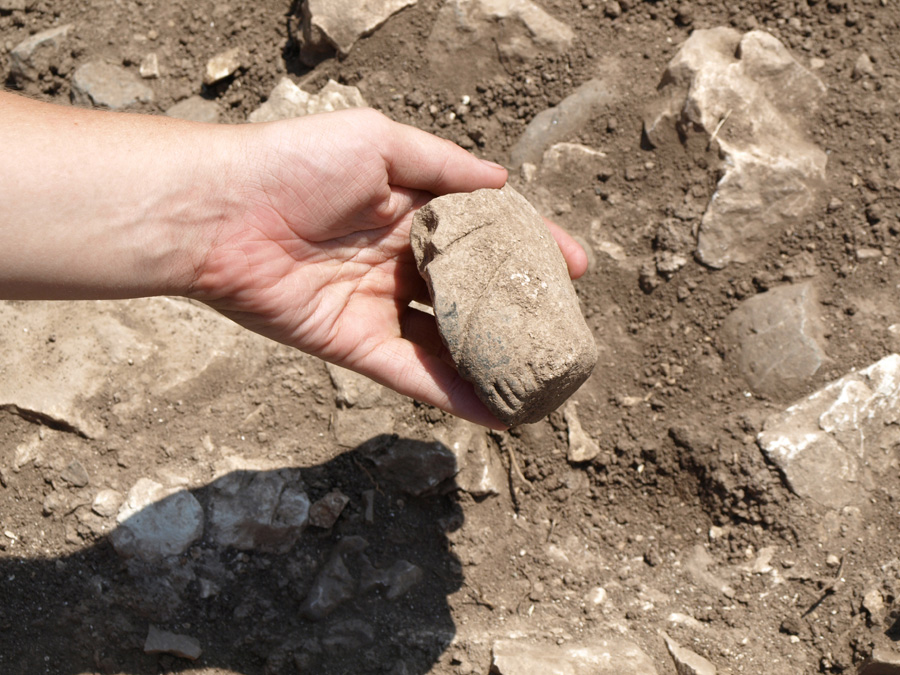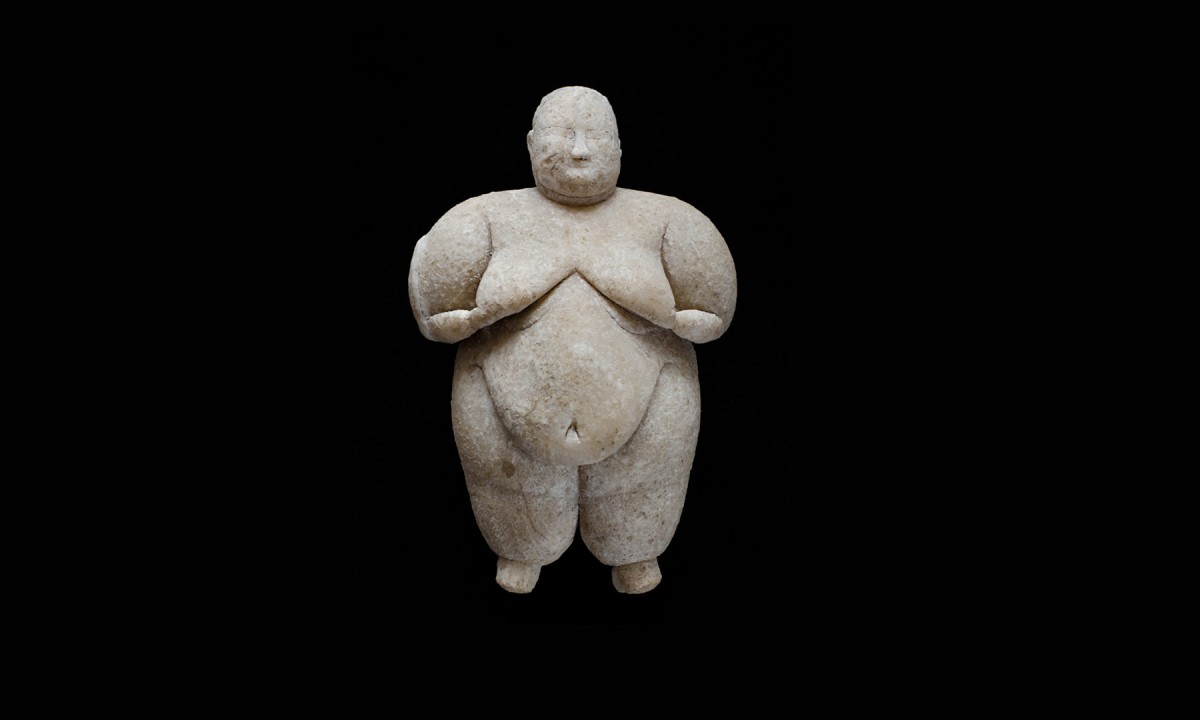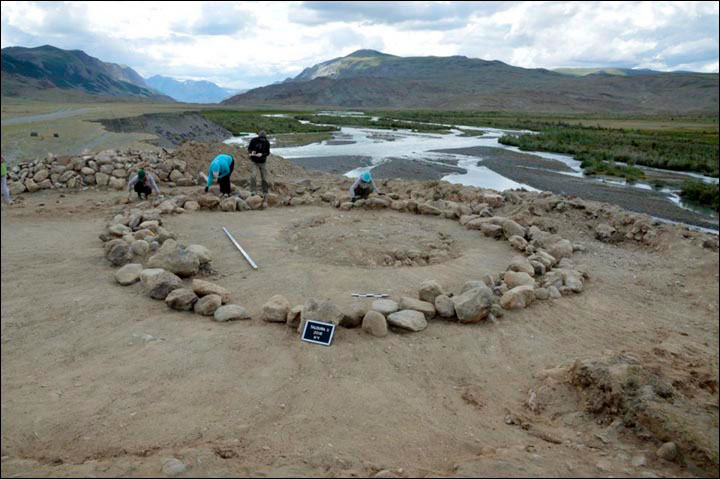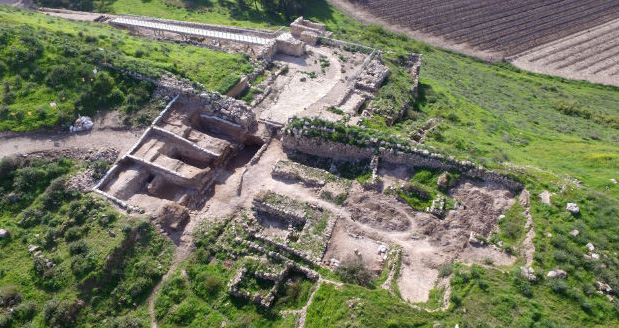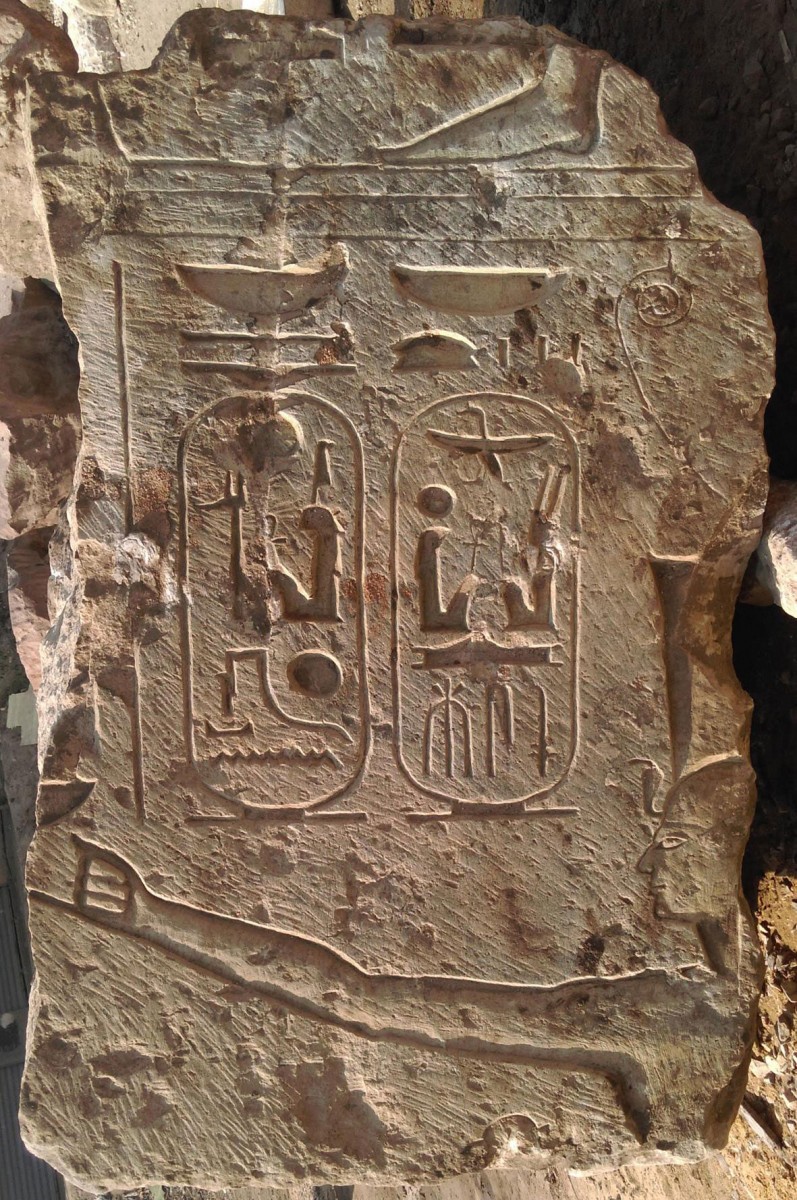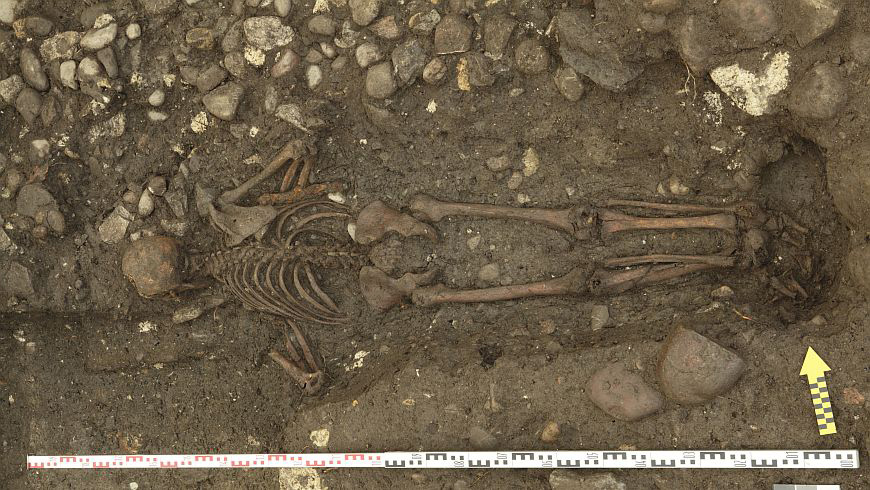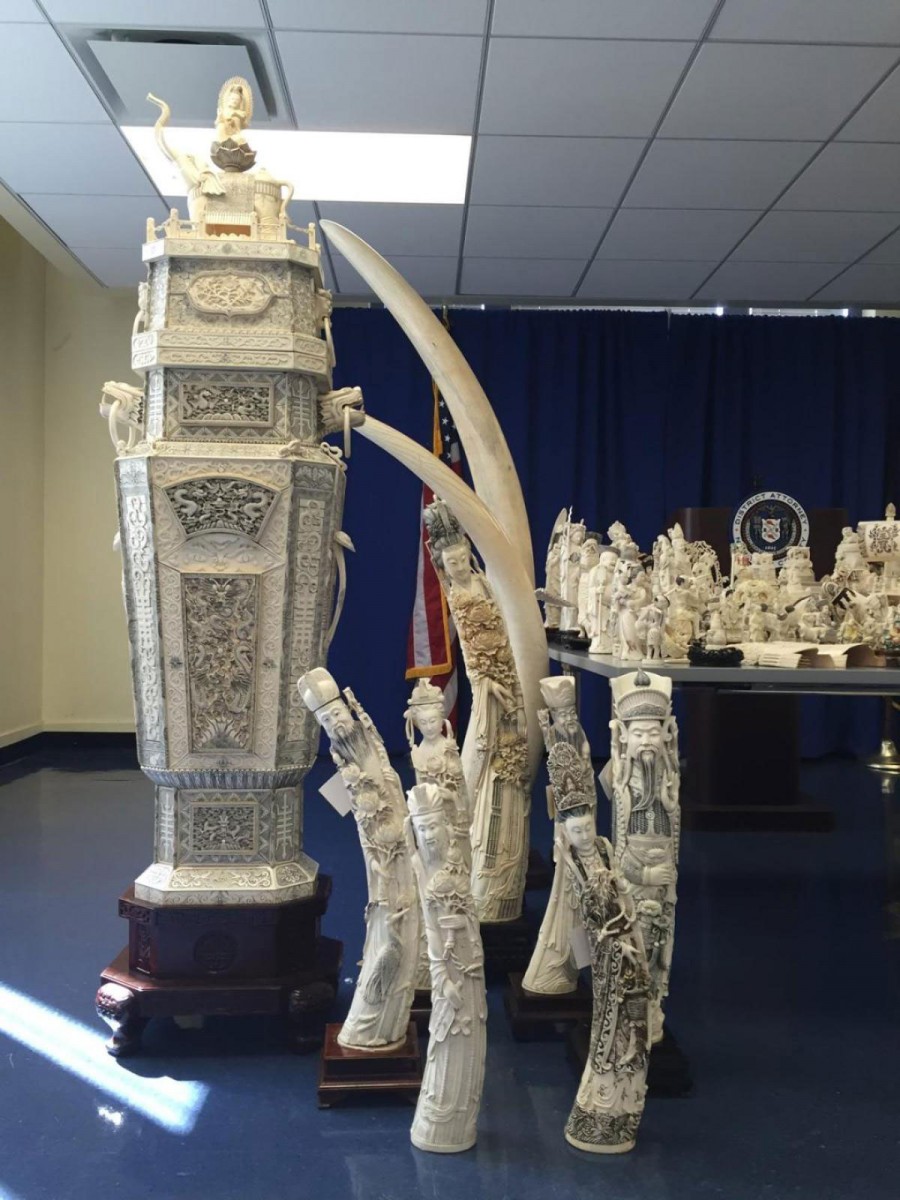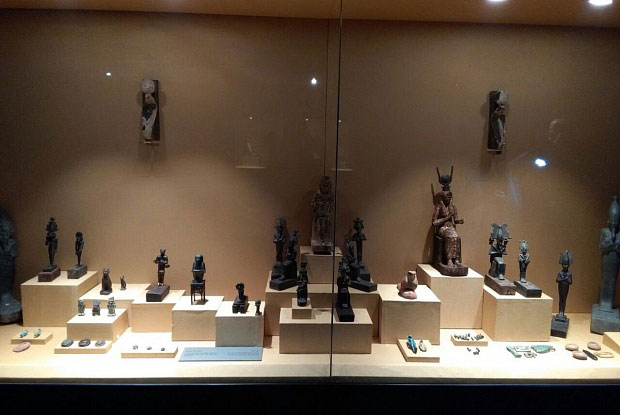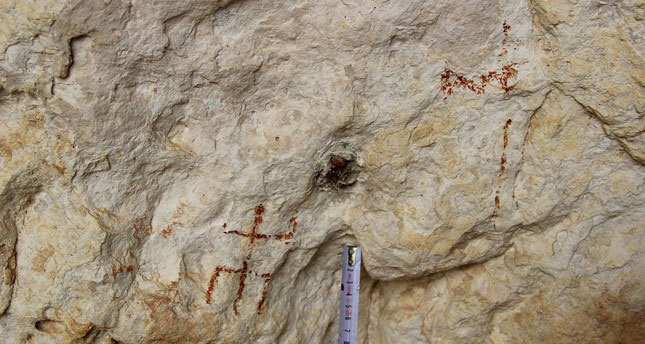Researchers describe new large prehistoric shark
Megalolamna paradoxodon is the name of a new extinct shark described by an international research team.
Lord of the rings
A University of Cincinnati team's rare discovery of four gold rings in the tomb of a wealthy Bronze Age warrior undisturbed for 3,500 years prompts a new consideration of Greek history.
Skeleton bears signs of a boomerang used as a lethal weapon
A skeleton found in Australia two years ago seems to have died from a boomerang blow and not by a sword, as was initially thought.
“The artist’s family or an Allegory of the Fine and Liberal Arts” by Nikolaos Kounelakis
An interpretive approach to the painting by Nikolaos Kounelakis “The artist’s family or an Allegory of the Fine and Liberal Arts”.
Ancient reptile fossils claw for more attention
Newly recovered fossils confirm that Drepanosaurus, a prehistoric cross between a chameleon and an anteater, was a small reptile with a fearsome finger.
Ear ossicles of modern humans and Neanderthals
Researchers relate the morphological differences in the ossicles to different evolutionary trajectories in brain size increase.
A fossilised bee nest indicates savannah-like hominine habitat
A fossilised bee nest discovered in South Africa offers new evidence regarding the environment of the Australopithecus Africanus.
Numerous Etruscan tombs found in Italy
Tombs discovered at the Etruscan necropolis of Vulci have revealed a variety of artefacts on Thursday.
Ritual pit complex revealed at the site of Prastio-Mesorotsos
In the ninth season of activity at the site of Prastio-Mesorotsos in the Pafos district, the team excavated in four areas, exposing prehistoric remains from the Neolithic, Chalcolithic and the Early and Middle Bronze Ages.
8,000-year-old ‘goddess figurine’ in central Turkey
A team of archaeologists led by Ian Hodder, professor of anthropology and of classics at Stanford, has unearthed an about 8,000-year-old figurine at Çatalhöyük, a Neolithic site in central Turkey.
Headless burial in Siberia puzzles archaeologists
A unique discovery at the Altai Mountains, a tomb with decapitated skeletons but including the skulls, is puzzling archaeologists.
New Acropolis Museum promotes cultural heritage conservation
The New Acropolis Museum in Athens, Greece, uses cutting edge technology tools and equipment to conserve and restore works from the Acropolis hill.
Gate-Shrine dating to the First Temple Period in the Tel Lachish National Park
An important and unusual discovery was made in archaeological excavations that were carried out in the Tel Lachish National Park: a gate-shrine from the First Temple period.
Ancient structure was a dining room researchers say
A structure at Jerusalem's Western Wall Plaza, discovered five years ago, was not a public fountain but a dining room, researchers say.
New discoveries at Matariya point to a Ramesses II temple
Elements linked to the unknown temple were uncovered about 450 m. to the west of the obelisk of King Senusret I in Matariya and another group of large blocks, carrying Ramesses II name in an unorthodox variation, was yielded in the southern part of the area.
Ancient graves discovered in Libya
Two ancient graves have been discovered in Libya, including skeletons and artefacts dating to the 4th century BC.
The man who was buried face down
In order to understand an unusual 17th c. burial, coins found in the grave have been studied in detail by Empa’s x-ray specialists and reconstructed on the computer.
Authorities in New York seize ivory artefacts
Three dealers at the Metropolitan Fine Arts and Antiques store in New York were arrested a few days ago for selling ivory artefacts without a licence.
Mallawi Museum in Egypt has reopened
The Mallawi Museum in Al-Minya governorate has reopened, following a three-year interval after it was ransacked in 2013 and a costly renovation.
Roman coins excavated in Japan
Archaeologists in Japan have excavated Roman coins from the ruins of Katsuren castle in Okinawa Prefecture. It is the first time such an item is found in the area.
Prehistoric cave paintings found in southern Turkey
Prehistoric cave paintings discovered in Turkey are almost fully intact. The announcement was made on Friday at a press conference.
“Once upon a time… the Antiquity”
Conference on cultural heritage with specific interest in media productions for children.
Athens Acropolis recessed northern wall to be restored
Sections of the recessed Athens Acropolis north fortification wall, known as the Themistoclean Wall, will be subjected to restoration works, following approval of the Central Archaeological Council of Greece.
Portrait of an Unknown Lady
Following extensive ongoing research to enhance the representation of women artists across British art history, Tate has acquired a rare painting, Portrait of an Unknown Lady 1650-5 by Joan Carlile.




